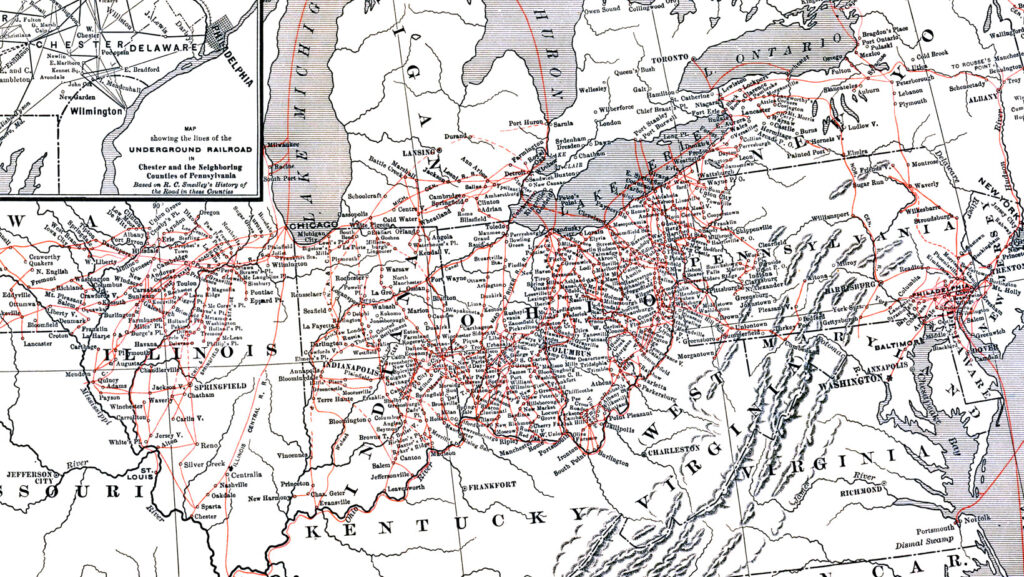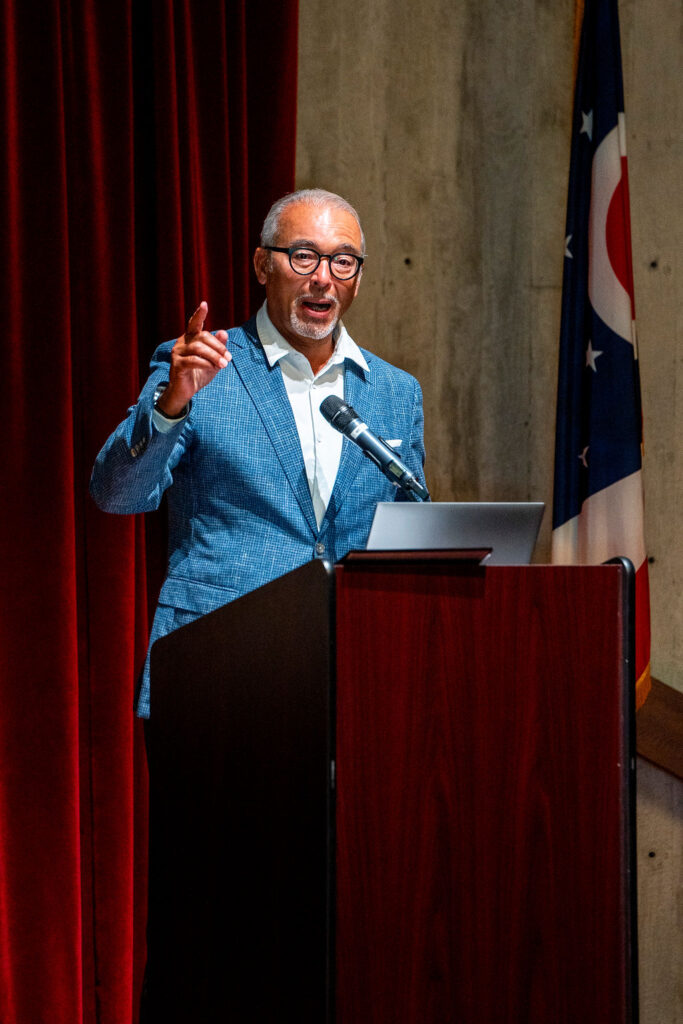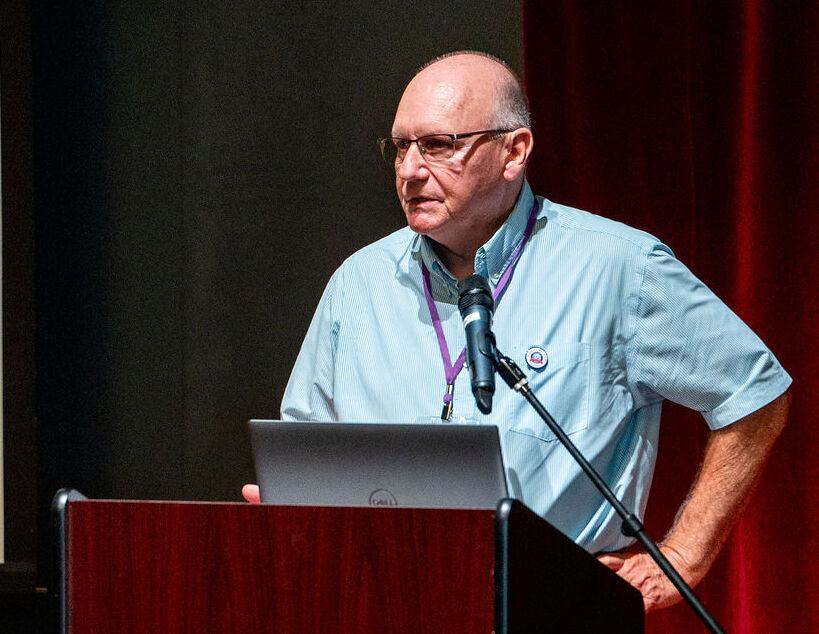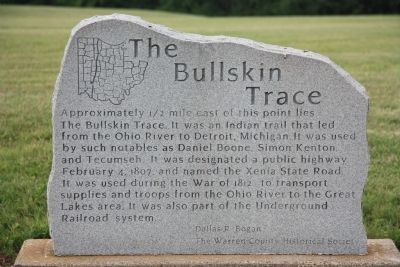
Background of Ohio’s Underground Railroad

As a free state bordering Canada, Ohio was an important part of the Underground Railroad.
A testament to this history can be found in the fact that Ohio has the most registered Underground Railroad sites in the U.S., numbering 103. Maryland is second, with 99 sites.

Gathering Background
On Monday, September 23, 2024, sites from across Ohio dedicated to telling the history of the Underground Railroad came together for the first time at the Ohio History Center in Columbus to share their stories in a joint dialogue. The event was organized by America 250-Ohio, in conjunction with the National Park Service.
The day included learning, discussion and sharing of ideas as speakers from various organizations across the state brought their own unique work to the discussion.
Gathering Welcome
The gathering began with short introductions by Valerie Boyer of the Ohio History Center, the host site, and Taylor Tomu of America 250-Ohio.
“It’s been such an honor to collaborate with our incredible partner, the National Park Service, and our dedicated planning committee. Together, we created a space for meaningful dialogue and discovery, deepening our collective understanding of this pivotal time in history. The gathering truly demonstrated the power of shared stories and collaboration, and I believe it will inspire continued research, restoration, and new connections across Ohio and beyond,” says Taylor Tomu, America 250-Ohio.
Boyer encouraged the audience to “When you leave here today, don’t [just] leave here today. Take some of today with you.”

Michael B. Coleman’s Opening Remarks
America 250-Ohio Co-Chair Michael B. Coleman gave the opening remarks, introducing the event and giving his thoughts on its importance.
Coleman told of his own personal connection to this historic occasion, explaining the story of his great grandmother, Margaret Dean. Dean was an enslaved woman who, after being freed following the American Civil War, lived to be 104.
Expressing the importance of honoring our ancestors, Coleman honors Dean’s legacy through a picture of his grandmother that hangs in his office, “so that every time someone came to see her great-great-grandson, they had to pass by her first.”
Coleman gave a strong closing remark to begin the gathering, conveying the day’s significance and our part in it with our ability to pass on the stories of our ancestors to our descendants.
“To be a passenger to freedom on the Underground Railroad means so much to our state and to our country. We will light that torch and carry that torch for so many.”
Opening Session
Following Coleman’s speech, Jim Lee of the Shawnee Tribe opened the event with the presentation of Interwoven Paths: Expanding Ohio’s Underground Railroad Narratives Through Indigenous-Freedom Seeker Connections, during which he gave a history on his ancestry and the Shawnee tribe in Ohio as it relates to the history of slavery and the Underground Railroad.

Breakout Sessions
The overarching name for these breakout sessions was Passing Along the Knowledge: Stories of Success from Network to Freedom Sites. The sessions provided an opportunity of learning and dialogue about this shared piece of American history that still impacts us into today. The speakers and organizations have long histories in their areas of expertise, creating a day filled with learning. Many lesser known stories were told that deserve to be shared, including the lives of various Indigenous and Black abolitionists, and their roles in Ohio’s Underground Railroad. In addition to the stories that were told, the sites themselves had the opportunity to discuss and share about their preservation, such as education for young children.
More details on the sessions and guest speakers can be found here: Underground Railroad Program.
Lunch Presentation

Photo by Dale K. Benington
The lunch presentation was made by Mark Evans presented Intersections of Resilience: Exploring the Afro-Indigenous Experience on the Underground Railroad. He spoke about stories about the Bullskin Trace Trail on St. Rt. 68, how Indigenous Americans and Quakers played a role in the Underground Railroad from Ohio to Canada. He told powerful stories of adversity and perseverance, such as those of Black abolitionists.
Closing Session
Bridging Generations: Engaging Youth in the Stories of Lost Sites and Honoring Legacies
The gathering was closed by Paul LaRue, a former social studies teacher, who spoke about the importance of preserving historical sites and telling their stories for educational purposes.
Conclusion and takeaways
The event was an opportunity for connection and growth. It fulfilled the desire and need to tell these untold stories, and allowed all these sites already united around a common interest and cause to connect for the first time. These meaningful conversations made it not just a gathering, but a network for sites to strategically work with each other and not only remember this history, but amplify it.
What’s next?
Each September is International Underground Railroad Month, so it’s an appropriate time for the first gathering of Ohio’s Underground Railroad sites. We hope to do another gathering like this again in September, 2025. Sites from outside Ohio have also expressed interest, so we look forward to sharing even more voices in the future.
As part of the Under-Told Stories Committee, this project was an opportunity to shine light on Indigenous and Black abolitionists and acts as a through line to telling these under-told stories. The Under-Told Stories Committee is part of America 250-Ohio, and works to remember the lesser known stories of history. Stay connected to what we’re doing by signing up for the America 250-Ohio e-newsletter. Watch for a blog series in 2025 to hear more under-told stories.